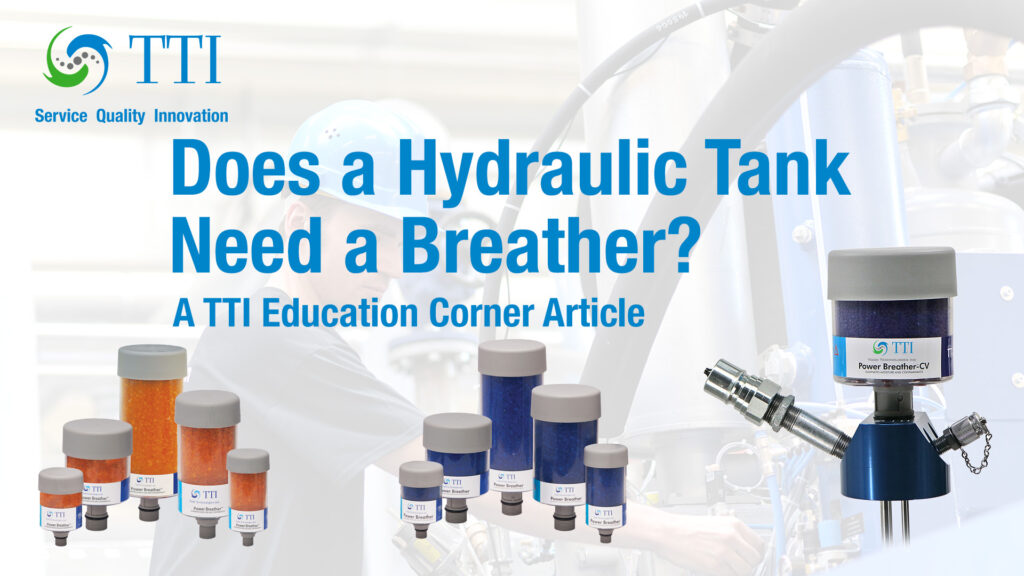
The presence of water and particulate contamination can inflict substantial damage on a machine with hydraulic components and degrade system performance for equipment over time. This is why desiccant breathers are integrated with hydraulic equipment to block the entrance of airborne moisture from entering the reservoir, thus preventing the contamination level from rising. At Todd Technologies Inc. (TTI), we offer hydraulic tank breather options designed to prevent harmful particle contaminants and destructive moisture from infiltrating your equipment and causing damage, allowing normal operation for you and your team.
Open-circuit hydraulic systems are characterized by the free movement of air into and out of a reservoir as the hydraulic fluid level fluctuates up and down. Air that is yet unfiltered can carry various types of airborne contaminants – i.e. moisture, dirt, dust, and other debris – all of which can pollute the process fluids flowing through a hydraulic system. When left to remain and accumulate, these particulates can damage various components of the system and diminish its efficiency.
Even with a closed system, contamination can come from other external or internal sources – one of which is through the hydraulic reservoir breather.
A hydraulic tank breather permits the flow of air into and out of the tank. When the pump retracts, air is pulled into the hydraulic reservoir through the breather, with fluid pulled into the hydraulic cylinder.
Hydraulic breathers eliminate particulates from the air flowing into the hydraulic system to ensure it continues functioning as designed throughout its service life.
Proper maintenance of desiccant breathers in hydraulic tanks is essential to ensure their continued efficiency. This is done by changing out the filter element on a regular basis. If this is not done, clogging can occur, leading to a partial vacuum in the reservoir, which can cause cavitation and eventually premature failure of the pump.
Often, pressure valves are incorporated with filters to eliminate the potential for cavitation. If the pressure exceeds safe levels, the valve lowers the pressure in the system.
For information about the desiccant breather models we offer at TTI and the benefits of desiccant breathers in all types of industrial applications and extreme environment applications, call us today at 303-585-0132 or use our contact form to send us a message.